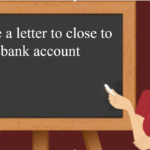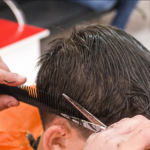A pronoun is a word that is used to replace or substitute a noun. It helps in avoiding repetition in a sentence by referring to a previously mentioned or easily understood noun. Pronouns play a crucial role in making sentences concise and less repetitive.
Types of Pronouns:
-
Personal Pronouns:
- Subjective Case: Used as the subject of a sentence.
- Examples: I, you, he, she, it, we, they.
- Objective Case: Used as the object of a verb or preposition.
- Examples: me, you, him, her, it, us, them.
- Possessive Case: Indicates ownership.
- Examples: my/mine, your/yours, his, her/hers, its, our/ours, their/theirs.
- Examples: my/mine, your/yours, his, her/hers, its, our/ours, their/theirs.
- Subjective Case: Used as the subject of a sentence.
-
Demonstrative Pronouns:
- Points to a specific noun in a sentence.
- Examples: this, that, these, those.
- This is my book.
- I prefer those over these.
-
Relative Pronouns:
- Introduces a subordinate clause and connects it to the main clause.
- Examples: who, whom, whose, which, that.
- The person who called has a message.
- The book that you borrowed is due.
-
Interrogative Pronouns:
- Used to ask questions.
- Examples: who, whom, whose, which, what.
- Who is at the door?
- What are you looking for?
-
Indefinite Pronouns:
- Refers to a non-specific person, thing, or amount.
- Examples: all, another, any, anybody, everyone, nobody, some, several.
- Everyone is welcome to join.
- Some prefer tea over coffee.
-
Reciprocal Pronouns:
- Indicates a mutual action or relationship between two or more individuals.
- Examples: each other, one another.
- They love each other deeply.
- The team members support one another.
-
Reflexive Pronouns:
- Reflects back to the subject of the sentence.
- Examples: myself, yourself, himself, herself, itself, ourselves, yourselves, themselves.
- I did it myself.
- She looked at herself in the mirror.
-
Intensive Pronouns:
- Emphasizes a preceding noun or pronoun within the same sentence.
- Examples: myself, yourself, himself, herself, itself, ourselves, yourselves, themselves.
- I myself will take care of it.
- The president himself attended the event.
Understanding these pronoun types is crucial for effective communication and writing, as they contribute to clarity and conciseness in language.
1) Question: Identify the personal pronoun in the sentence: “She is going to the store.”
A) She
B) Going
C) Store
A) She
B) Going
C) Store
Show/Hide
Answer: A) She
Explanation: “She” is a personal pronoun representing the subject of the sentence.
2) Question: Choose the correct objective case pronoun: “John handed the gift to ___.”
A) I
B) me
C) myself
A) I
B) me
C) myself
Show/Hide
Answer: B) me
Explanation: In the objective case, “me” is used as the object of the preposition “to.”
3) Question: What is the possessive pronoun for the word “it”?
A) its
B) it’s
C) itself
A) its
B) it’s
C) itself
Show/Hide
Answer: A) its
Explanation: The possessive form of “it” is “its.”
4) Question: Identify the demonstrative pronoun in the sentence: “Look at that beautiful sunset.”
A) Look
B) Beautiful
C) That
A) Look
B) Beautiful
C) That
Show/Hide
Answer: C) That
Explanation: “That” is a demonstrative pronoun pointing to the sunset.
5) Question: Choose the correct relative pronoun to complete the sentence: “The person ___ called has a message.”
A) who
B) whom
C) whose
A) who
B) whom
C) whose
Show/Hide
Answer: A) who
Explanation: “Who” is the relative pronoun introducing the subordinate clause.
6) Question: What is the interrogative pronoun in the question: “___ is at the door?”
A) Who
B) What
C) Is
A) Who
B) What
C) Is
Show/Hide
Answer: A) Who
Explanation: “Who” is used to ask about a person.
7) Question: Identify the indefinite pronoun in the sentence: “Some prefer tea over coffee.”
A) Some
B) Prefer
C) Tea
A) Some
B) Prefer
C) Tea
Show/Hide
Answer: A) Some
Explanation: “Some” is an indefinite pronoun referring to an unspecified group.
8) Question: Choose the reciprocal pronoun in the sentence: “They love ___ deeply.”
A) Each other
B) Themselves
C) One another
A) Each other
B) Themselves
C) One another
Show/Hide
Answer: C) One another
Explanation: “One another” is a reciprocal pronoun indicating a mutual action.
9) Question: What is the reflexive pronoun in the sentence: “She looked at herself in the mirror.”
A) She
B) Herself
C) Mirror
A) She
B) Herself
C) Mirror
Show/Hide
Answer: B) Herself
Explanation: “Herself” is a reflexive pronoun reflecting back to the subject “She.”
10) Question: Choose the intensive pronoun in the sentence: “I myself will take care of it.”
A) I
B) Myself
C) Will
A) I
B) Myself
C) Will
Show/Hide
Answer: B) Myself
Explanation: “Myself” is used for emphasis in this sentence.





